Earlier we talked with Eric Roberts about his awesome working model roller coaster. In that interview, he mentioned he creates his own Halloween dark ride with automated vehicles. We just had to learn more and Eric went into so much detail we decided to give his homemade haunted house its own feature. Thanks again to Eric for taking his time to answer our questions!
First, take a ride on Eric’s dark ride by watching the 360 degree video below.
C101: Where did the inspiration come from to build your own haunted dark ride?
Eric: It came from many things that all combined at just the right time. In 1986, I saw my first line-following robot. It was one of the coolest things I have seen up to that point. I remember thinking “Wouldn’t it be great if cars did this so I won’t have to drive?” I was obsessed with line followers. Being a hardcore Halloween enthusiast, I have been doing various home haunts since the late ’90s. Also being a theme-park junkie is a big influence.
The defining incident came about when talking to an amazingly creative and supportive friend who always encouraged me and gave me this desire to surprise him with new ideas. He ALWAYS geeked out about my Halloween stories and ideas. We were talking through text one day, trying to brainstorm on how to out-do the previous year’s haunt. I casually mentioned that a friend had given me a mobility scoot and I could make the walk-thru a ride-thru instead…. he got ridiculously excited and said “Please, Please, PLEASE!! YOU HAVE TO BUILD A DARK RIDE” I laughed, because that is his typical enthusiasm and I feed off of it.
A few weeks later, he passed away. That was the last conversation I had with him. So, that drove me to make it a reality.
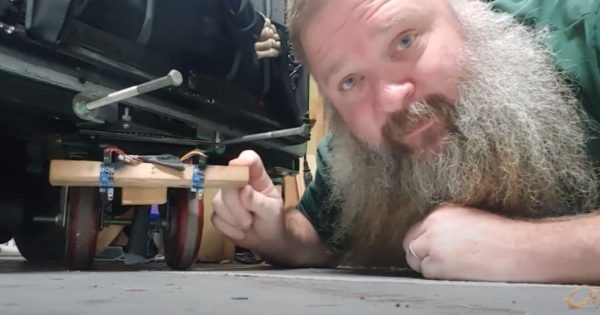
C101: Wow, that’s an incredible story! How did you take that passion and excitement and then go about planing and designing the dark ride?
Eric: It was mostly designed on the fly. Very impulsively really, but I did keep the following in mind:
- How to propel it/power requirement
- How to steer it
- Cart size
- Safety
- Cost
- Flexibility
I already had the mobility scooter – which I tested by having someone sit on a riding lawnmower and I would push them around my driveway while riding the mobility scooter to make sure it is powerful enough for what I want. It used two 12-volt batteries to run. Those were easy to source.
I watched a lot of YouTube videos and found a surprising lack of home built dark rides. There are, like, 5 or 6 that are quite impressive. But all of them rely on a fixed track. Along with not having the storage space, I am also driven to try to present a new spin on what is already out there in the world.
So – I can’t do track. Now what?
I looked at existing trackless devices, like dark rides, operator-less fork lifts, automated parking robots, etc.
The ones that rely on lidar (a method for measuring distances by illuminating the target with laser light and measuring the reflection with a sensor) or other optical mapping schemes were not only out of my skill set, they were (as a DIY project) potentially too complicated to reliably work in a home haunt. I want trick-or-treaters to spend time riding, not waiting for me to reboot the system.
The ones that follow wire or magnetic path reminded me that I know how to build line following robots, and reflective tape is relatively cheap!
I now had the basic idea of how to steer it, so I started with the chassis. I measured the smallest part of the garage and found I needed a turn circle of no more than 7 feet outside edge to edge. I tested various steering ideas, some early attempts are on my YouTube page. Until I found the most reliable way that could give me the smallest turning circle.
Oh, one of the side effects of a typical line following robot is a side to side shimmy as it is turning two drive motors on and off to steer the device. That is very unacceptable for having kids ride on the cart. I needed to truly steer the cart at the front.
Being familiar with line followers that use IR to track the line, I decided to stick with that. Using IR obstacle sensors, I tested their output against the reflective tape I want to use. Reliable and easy to tune. I would use these with an H-bridge motor driver connected to a windshield wiper motor to steer the front wheels rather than pulse the drive wheels separately.
Given the tight turn I needed at the end of a hallway and estimating a riding load of about 500 pounds, I decided on a 2 foot by 4 foot chassis. I still didn’t know how the kids would sit – but a friend suggested one in front of the other, like a log flume or bobsled coaster – YAY! more theme park references… and different than what has been seen on a dark ride.
There are several safety systems in place, such as remote kill for both carts. Every actor in the maze has a keyfob that will kill the drive motor on both carts. There is also a line monitoring sensor. If that sensor no longer sees the line, it will kill the drive motor.
Cost-sheesh… everything fun cost money. To keep cost down, I used a lot of common items like, wood, steel, hardware store parts. The most expensive item is the motor controller with feedback. I guess the batteries have a hefty price tag too.
Having solid track would mean the dark ride would have a fixed path. I like to change my layout every year. While having a fixed path could be altered, it would take extra time and materials. Using reflective tape has meant I have multiple paths that coexist. I can alter the overall path by blacking out intersections thereby directing the cart at that point.
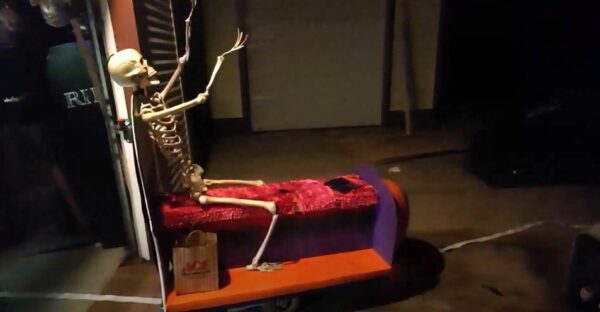
C101: The cars are fully automated? How does it work?
This is surprisingly simple. I wanted as much of the logic hard-wired because I am rubbish at programming. And I wanted this up and running quickly without having to tweak the code often.
The carts power up in a stop state. There is a Go and Stop button on the back. If the line monitoring sensor sees a valid line, it’ll light the Go button and when pressed, will latch the drive motor to run until the Stop button is pressed or that sensor no longer sees a line. If no line is seen, the button will not light but it will turn on the drive motor but not latch it. This was added because a cart full of kids is heavy, and if anyone needs to move the cart they only need to hold the Go button. Lets say a candy wrapper is dropped – blocks the line sensor and shuts the drive off… the cart can be manually driven past the wrapper by holding the button.
The wiper motor steers the front wheels left and right by monitoring the two sensors on either side of the line. If no sensor sees the line, do nothing (actually, it holds an electronic brake on the steering so it won’t drift). If the right sensor sees the line, move the motor clockwise until the right sensor no loner sees the line. Same for the left sensor.
I took advantage of the line monitoring sensor and added black tape to force a stop in the load/unload area of the haunt. The tape prevented accidental starting of the cart as well.
The most sophisticated part of the cart is its speed regulation. There is an optical encoder that measures the RPM of the drive motor. This talks to the motor controller so that the motor will maintain constant speed by regulating current to the motor.
Why? The first year this ran, we had to manually adjust speed on every dispatch as the number of riders affected the speed of the cart – have only two children and the cart would move too fast. Get two or three adults and a child, the cart wouldn’t move at all.
By having a controller handle the current to regulate speed meant we could set a speed that would let us time effects to trigger at the same time for every trip through the haunt. Also, we got to use ramps as it could now increase and decrease the power to the motor as needed.
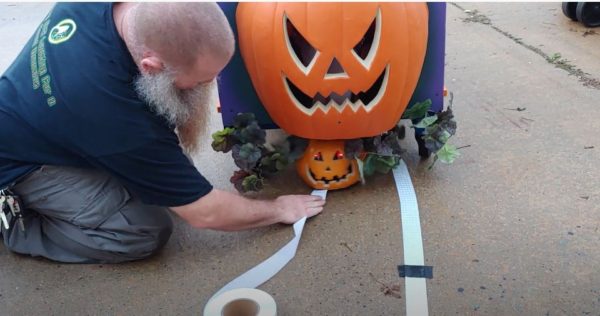
C101: Wow. Sounds like a lot of work went into the homemade haunted house. What was the most challenging part of building it?
Eric: That would be a tie between overcoming the variable speed because of the various rider load and the battle of the sunlight blinding the steering sensors.
One of my first attempts to monitor speed did not work well at all and would increase speed through the turns – which was bad as the steering couldn’t react fast enough and the cart would leave the track. Thankfully, the safety system worked and would stop the cart. I think I have a video of the first attempt and then explanation of what I was changing.
Wanting to bring the track outside for loading and unloading presented the challenge that the steering sensors would be blinded by the sun and would falsely read a line when there was none there. This required disassembling the steering head and adding extra light shielding. That in itself presented a new problem as it would pick up debris like leaves or in one case, a candy wrapper and this required human intervention to clear. I’m still trying to figure out a solution to that one.
I want to add that the friend who inspired me for so many years is Andrew. His name is on the first cart as a way of having him enjoy Halloween with us. The dark ride would likely have only been a “what if” if it wasn’t for his motivation and encouragement. Thank you Andrew. I miss you.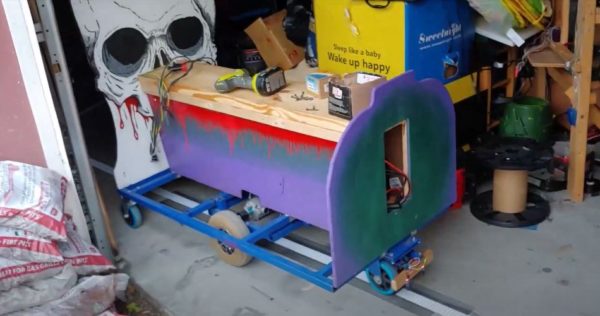
Thanks again to Eric for taking the time to share his incredible creations with us. Can’t wait to see more in the future.
Be sure to subscribe to his YouTube Channel for more on his model coaster and homemade haunts.

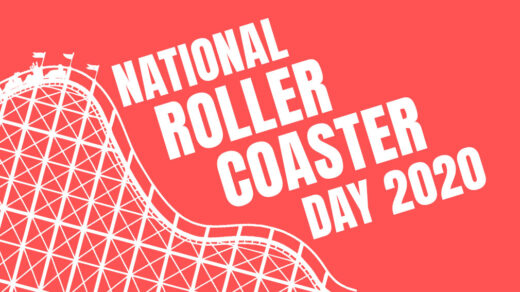







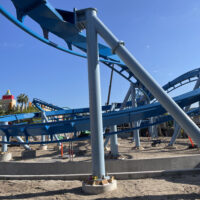





Recent Discussion